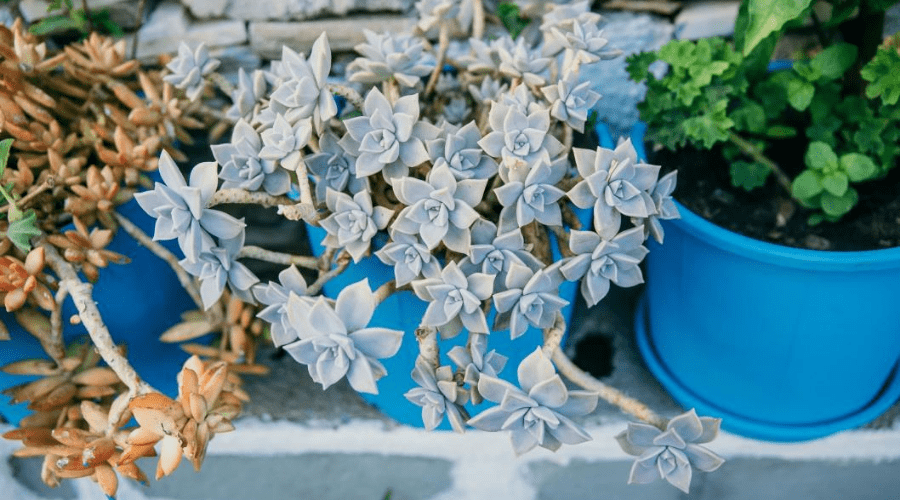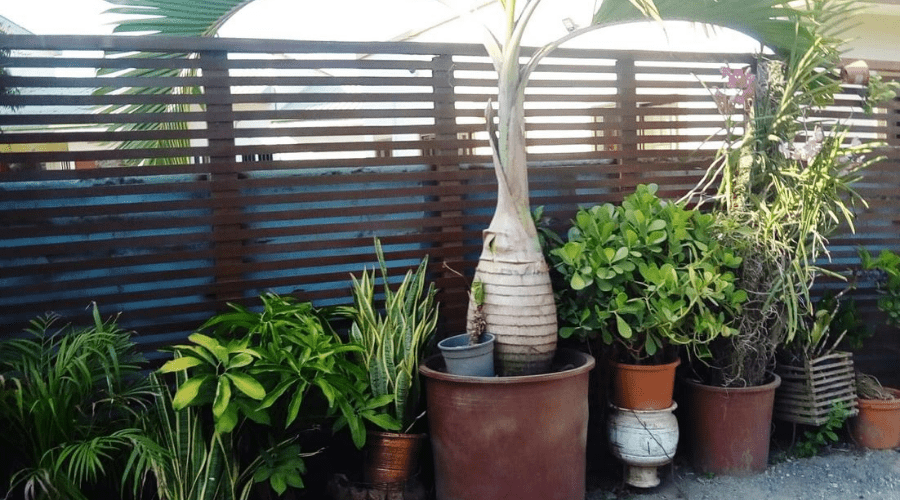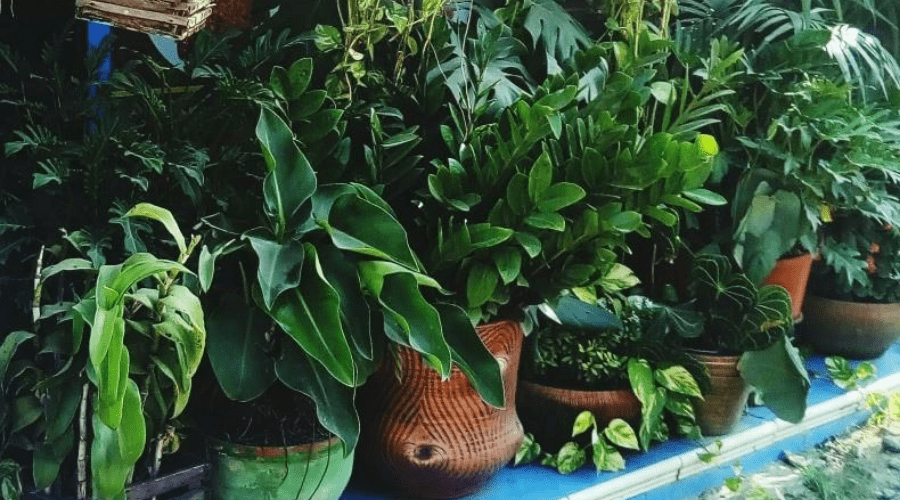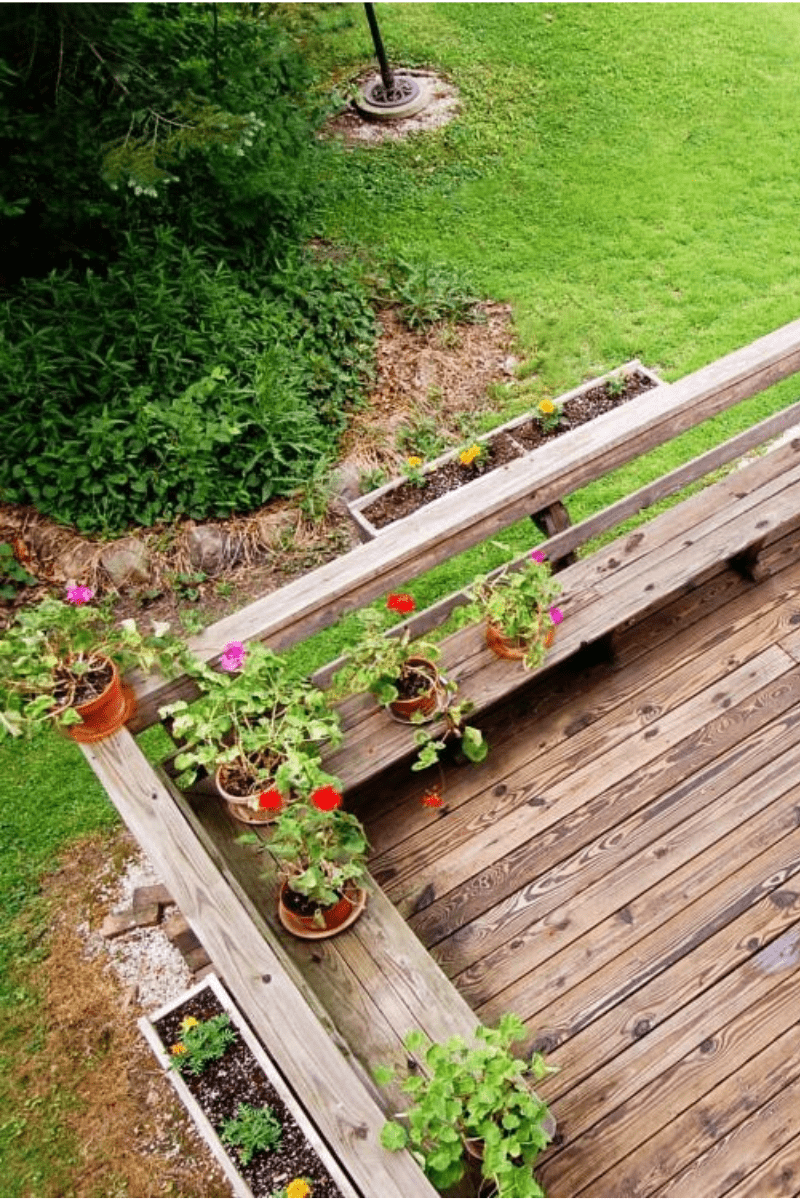The weather has turned warmer, the sun is shining brighter, and let’s face it, you are more than ready to enjoy the outdoors. Good news: So are your house plants! Being moved outside in the summer stimulates growth, supplying them with sunlight and fresh air, making them healthier overall.
This complete guide explains everything you need to know about moving indoor plants outside, covering the perfect time to move them, how to move them, and how their care will differ outside.
When Can I Move My Plants Outside?
The best time to move your house plants outside is during the summer. Typically, you can move house plants outside for May-September but it really does depend on your USDA Plant Hardiness Zone and your last frost date.
It’s a good idea to wait 2 to 4 weeks after the last frost before moving your plants outside. House plants typically come from the subtropics and tropics so the perfect temperature range for them is between 60-80 F. If the weather is still dipping below 50 F, hold off on taking them out.
Can Houseplants Survive Outside?
I get it, you love your house plants, they’re your little botanical babies, and you are scared to expose them to the cruel, hard world. Don’t worry, as long as you follow the timeline and care tips in this guide, they will be absolutely fine.
You can quite literally take every house plant, from your cacti to your African violets, outside. Of course, some of the more delicate ones you should take extra care with, but almost all plants benefit from exposure to fresh air.
What About Outdoor Pests?
It’s unlikely that pests will bug your plant as long as you keep it happy and healthy. They are typically attracted to plants that are already suffering, preying on them when they are weak, lacking proper nutrients and hydration.
In the unlikely event that your plant does become plagued by pests, use organic insecticides and miticides to get rid of them. Before you move your plants back indoors, be sure to check them, their soil, and their containers for pests. Sneaky slugs have a tendency to hide under pots, and most crawling pests will hide on the underside of the leaves.
What are the Benefits of Moving House Plants Outside?
House plants don’t like being cooped up any more than you do! Fresh, warm air does wonders for them, giving them life after a long dreary winter. In fact, warmer temperatures have been proven to speed up house plant growth, so not only will moving your plant outside make it healthier, but it will also make it bigger.
Of course, plants can also benefit from rainfall—which washes the dust off their leaves—more sunlight, and being around other plants.
How Do I Move My Plants Outside?
As tempting as it may be, you cannot just pick your plant up from its happy little windowsill and shove it outside. You have to be gentle about the moving process, hardening it off to avoid shock.
Gradually move your plant outdoors to an environment that suits it to limit the amount of stress on your plant. After all, the whole point of moving it outside is to make it healthier.
How Do I Avoid Plant Shock?
To help your plant avoid shock harden it off to the outdoor environment you are moving it too. This means exposing it to cooler weather and an increased amount of light in gradually increasing increments of time.
The first couple of days place it outside during the day for a few hours in a shady spot that is protected from the wind. Then, add on an hour every day until by the two-week point your plant is outside for 12 hours a day. After two weeks you can start leaving your plant outside at night time, allowing it to adjust to colder temperatures.
Cold weather is the biggest threat to plant health, but that’s not to say light doesn’t contribute to plant shock. Keep in mind that light’s intensity is far greater outdoors than indoors.
Do not leave your plant in a sunny location when first placing it outside or its leaves may become burned, and it may die. In fact, the first few times you bring your plant outside it shouldn’t even be a particularly bright day.
Eventually, your plant may be able to withstand direct sunlight, depending on what variety it is, but you need to build up to that. Consider the first time you sunbathe during the summer, after spending months wrapped in coats, pants, and turtlenecks. The damage that would occur to your skin if you didn’t wear sunscreen is exactly what would happen to a plant’s delicate foliage.
Where Should I Put My Plants?
Place your plants in a shady location protected from wind and other elements. Wind can dry out plants, batter them, and even knock them over.
Although plants enjoy light rainfall, they should be protected from downpours since that can lead to them being overwatered, their foliage being damaged, and their soil being displaced. Put them in a location where they can easily be transported to under an overhang in the event of a big rainstorm.
Some plants do not originate from areas with much rainfall, so be sure to look up your particular plant’s watering requirements.
If you have hanging plants, consider suspending them from the branch of a tree or another structure. There are lots of fun things you can do with your plants outdoors to jazz up your home’s exterior spaces.
The Differences Between Indoor and Outdoor Houseplant Care
There are some differences with how you should care for your house plants outdoors versus the care you provide them with indoors. For starters, plants that are brought outside will run through water and fertilizer more quickly so you need to increase the amount of both you are supplying.
Do not water your plants with a hose that has been sitting out in the sun. Often this leads to the water within being heated, which if it's hot enough, can traumatize plants. Also, do not blast your plant’s foliage with hose water, as easy as that would be. Instead allow water to trickle onto your plant's soil, or use a watering can.
Check your plant on a regular basis for pests like aphids, snails, and caterpillars and if they appear, remove them from your plants. Remember, your plant can suffer from the same problems inside as outside.
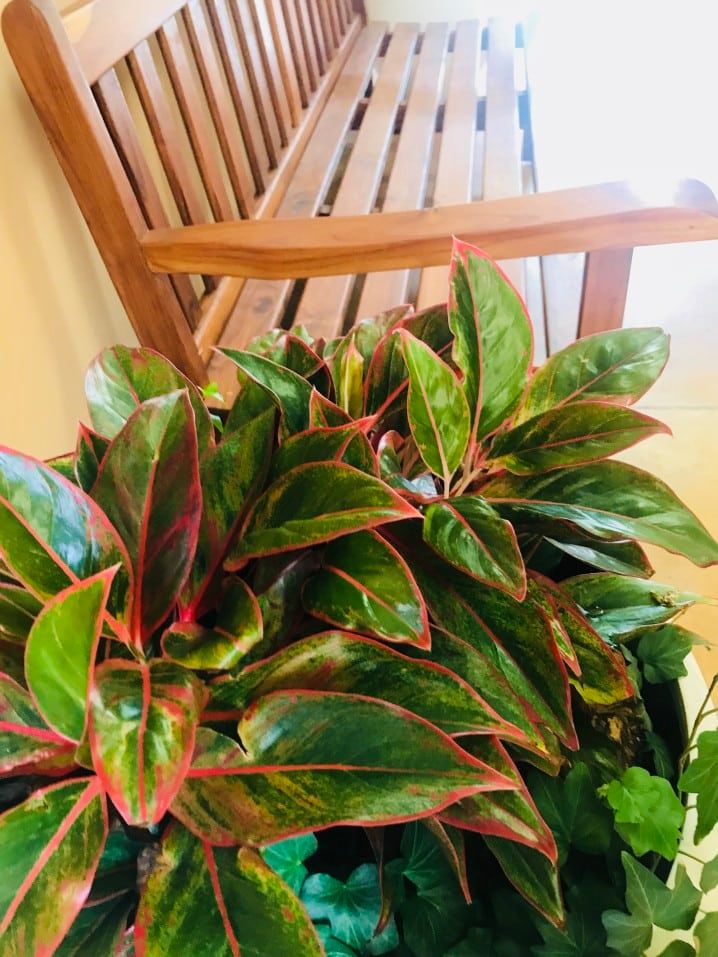 What Outdoor Temperatures Are Safe for My Houseplants?
What Outdoor Temperatures Are Safe for My Houseplants?
Plants can stay outside as long as temperatures stay in the 60 - 80 F range. If you go through a particularly hot heatwave or a sudden cold snap, it’s a good idea to take them back inside until either event ends. If you have extreme weather, like a hurricane or a huge rainstorm, you should also take them in.
What Time of Year Should I Move Them Back In?
Most house plants are from the tropics so once temperatures start regularly dipping below 55 F in the fall, they should be moved back inside. Generally, a good rule of thumb is to take your plants back inside in September before the first frost, but of course, when the first frost occurs depends on where you are in the country.
When you take them in prune off any leaves that were casualties to their vacation outdoors, including those that are scorched and damaged. Also, check your plant for pests or any odd growths in their soil and take care of them.
Conclusion
Summertime is vacation time for your plants and you! Your house plants don’t just look wonderful inside, they also look wonderful decorating balconies, patios, and backyards. Since you spend more time outside in the summer why not bring your plants with you so you can get the maximum amount of enjoyment out of them.
I hope you found this guide helpful! If you did, be sure to share it and comment below with any plant moving questions!

